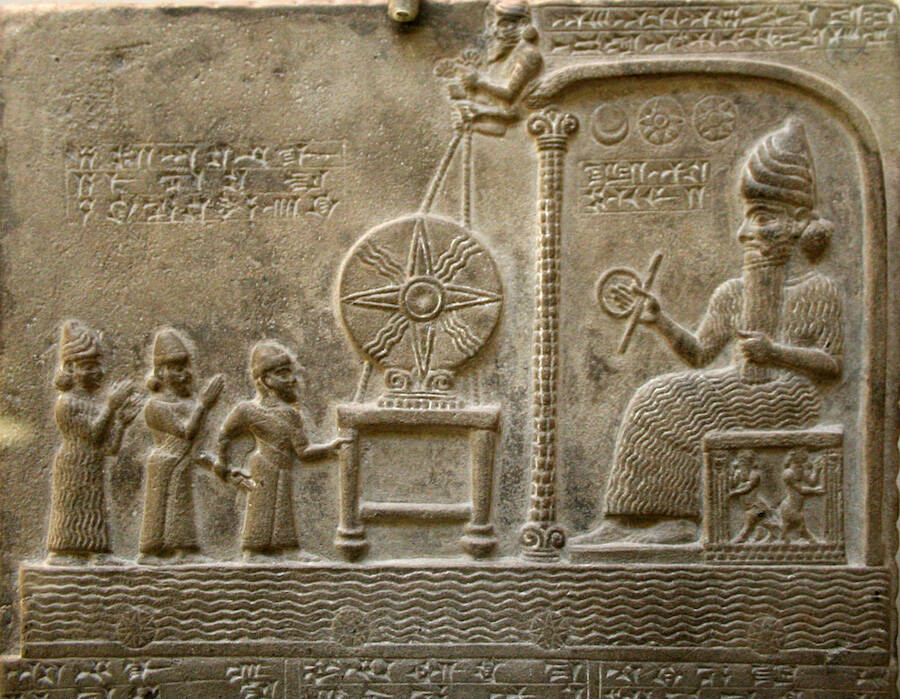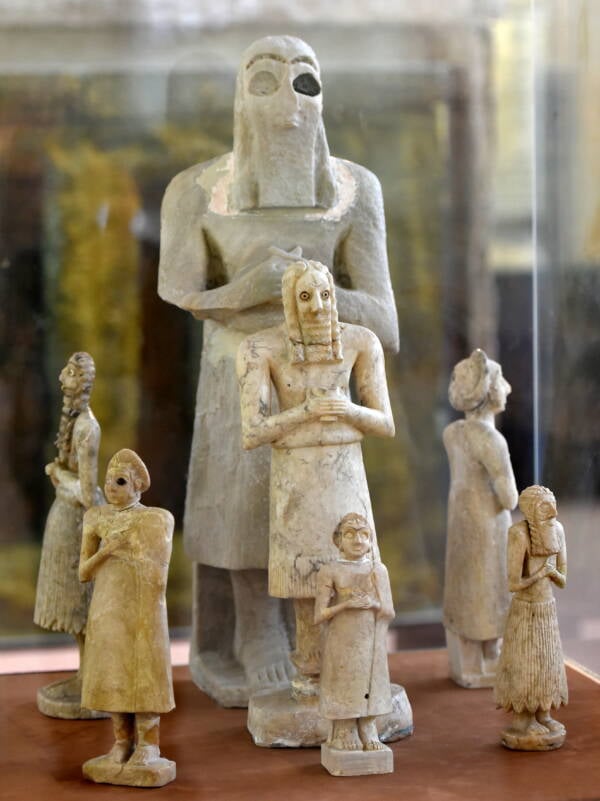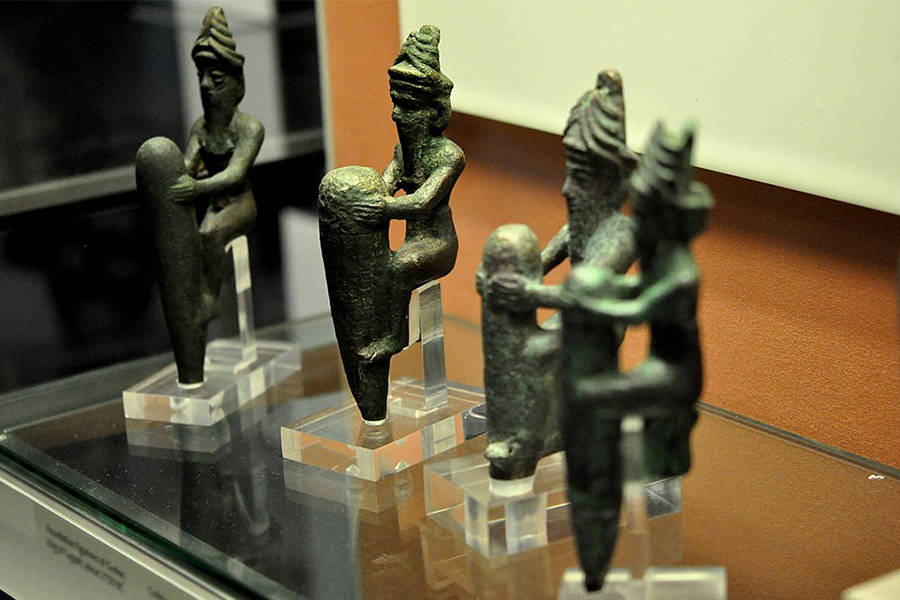Who Are The Anunnaki, The ‘Alien’ Gods Of Ancient Sumer?
Though scholars know the Anunnaki as the gods of ancient Mesopotamia, fringe theorists believe they are ancient alien invaders from the planet Nibiru.
Before the Greeks exalted Zeus or the Egyptians praised Osiris, the Sumerians worshipped the Anunnaki.
These ancient gods of Mesopotamia had wings, wore horned caps, and possessed the ability to control all of humanity. Sumerians revered the Anunnaki as heavenly beings who shaped the destiny of their society.

Wikimedia CommonsMột bức chạm khắc mô tả Anunnaki, vị thần Sumer cổ đại mà một số người tin là người ngoài hành tinh.
But were they more than deities? Some theorists claim that the Anunnaki were aliens from another planet. Even more shocking, they use ancient Sumerian texts to back up this wild idea. Here’s what we know.
Why The Sumerians Worshipped The Anunnaki
The Sumerians lived in Mesopotamia — present-day Iraq and Iran — between the Tigris and Euphrates rivers from about 4500 to 1750 B.C.
Despite being an ancient civilization, their reign was marked by a number of impressive technological advancements. For example, the Sumerians invented the plow, which played a huge role in helping their empire grow.

Wikimedia CommonsSumerian statues, which depict male and female worshippers. Circa 2800-2400 B.C.
They also developed cuneiform, one of the earliest known systems of writing in human history. In addition, they came up with a method of keeping time — which modern people still use to this day.
But according to the Sumerians, they didn’t do it alone; they owed their historic breakthroughs to a group of gods called the Anunnaki. In their telling, the Anunnaki mostly descended from An, a supreme deity who could control both the fate of human kings and his fellow gods.
Though much remains unknown about the Sumerians and their way of life, they left evidence of their beliefs in ancient texts, including the Epic of Gilgamesh, one of the oldest written stories in human history.
And if one thing is clear, it’s that the Anunnaki gods were highly revered. To worship these deities, ancient Sumerians would create statues of them, dress them in clothing, give them food, and transport them to ceremonies.
Millennia later, some scholars would speculate on what made these Anunnaki so special — and why they were held in such high regard. But it wasn’t until the 20th century that the “ancient alien” theory really took off.
Remove ads and support us with a membership
Why Some Think The Anunnaki Were Actually Ancient Aliens

Wikimedia CommonsA Sumerian cylinder seal, which some theorists believe is evidence of ancient aliens visiting the Earth.
Much of what we know about the Sumerian civilization comes from clues that they left behind in thousands of clay tablets. To this day, these tablets are still being researched. But one author claimed that some of the texts hold an incredible revelation — the Anunnaki were actually aliens.
In 1976, a scholar named Zecharia Sitchin wrote a book called The 12th Planet, which shared translations of 14 tablets related to Enki, a child of the Sumerian supreme deity An. His book claimed that the Sumerians believed that the Anunnaki came from a far-off planet called Nibiru.
Remove ads and support us with a membership
According to Sitchin, Nibiru has an elongated orbit of 3,600 years. At one point, this planet passed close by Earth. And its people, the Anunnaki, decided to make contact with our world around 500,000 years ago.
But the Anunnaki sought more than just a friendly exchange. They wanted gold, which they desperately needed to repair their planet’s atmosphere. Since the Anunnaki weren’t able to mine gold themselves, they decided to genetically engineer primitive humans to mine gold for them.
And by the time the Sumerians emerged as a civilization, the Anunnaki had given people the ability to write, solve math problems, and plan cities — which led to the future development of life as we know it.

Wikimedia CommonsA depiction of the ancient Sumerian god Enki, pictured in the middle.
This may seem like a truly out-of-this-world claim. But Sitchin — who spent decades studying ancient Hebrew, Akkadian, and Sumerian until his death at age 90 in 2010 — once said that skeptics didn’t have to take his word for it.
“This is in the texts; I’m not making it up,” Sitchin told The New York Times. “[The aliens] wanted to create primitive workers from the homo erectus and give him the genes to allow him to think and use tools.”
As it turned out, The 12th Planet — and Sitchin’s other books on this topic — sold millions of copies around the world. At one point, Sitchin even joined forces with Swiss author Erich von Danniken and Russian author Immanuel Velikovsky as a triumvirate of pseudo-historians who believed that the ancient Sumerian texts were not just mythological stories.

Instead, they believed that the texts were more like scientific journals of their time. And if these theorists were hypothetically correct on all counts, this would mean that the Anunnaki were not deities invented by people to explain life — but actual aliens who had landed on Earth to create life.
Humans, in their telling, were made to serve alien masters who needed the Earth’s gold to sustain their civilization. And as chilling as that sounds, millions are apparently willing to entertain this theory — at least for fun.
Controversy Over The “Ancient Aliens” Theory

Wikimedia CommonsAncient figurines that depict Anunnaki figures wearing traditional headpieces.
Most mainstream academics and historians reject the ideas put forth by Sitchin and his colleagues. They often say that these theorists have either mistranslated or misunderstood the ancient Sumerian texts.
One Smithsonian writer outright panned the History Channel show that explores some of these theories, writing: “Ancient Aliens is some of the most noxious sludge in television’s bottomless chum bucket.”
Though some skeptics admit that ancient Sumerian texts may include some unusual-sounding beliefs, they think it’s mostly because they lived in a time before people had a sophisticated understanding of things like floods, astronomy, animals, and other parts of life.
Meanwhile, authors like Sitchin took the Sumerians’ texts literally — and were confident in the translations that they made despite the backlash.

British MuseumClay tablets inscribed with cuneiform.
Remove ads and support us with a membership
However, one thing cannot be denied — the people of Sumer were advanced for their time. A clay tablet translated in 2015 shows that ancient astronomers made extremely accurate mathematical calculations for the orbit of Jupiter — a full 1,400 years before Europeans did.
And the Babylonians — who succeeded the Sumerians — may have also created trigonometry 1,000 years before the ancient Greeks.
Although the Sumerian civilization collapsed thousands of years ago, they arguably laid the seeds for humanity to grow and flourish. But did they have help from an otherworldly civilization? Could the ancient Sumerians have had alien visitors who taught them advanced math and science?
Ancient alien theorists would argue yes. They would point to translations like Sitchin’s, the advanced abilities of the people of Sumer, and the fact that some ancient Sumerian texts appear to reference “flying machines” (although this could be a mistranslation).
For now, there is no confirmed evidence that Sitchin’s theories are true. However, no one knows for sure whether or not some of his ideas might’ve been correct. At this point, scholars still have much to learn about the Sumerians. Many of their ancient clay texts are still being translated — and other texts have not even been excavated from the ground yet.
Perhaps most challenging, we also have to recognize that humans today can’t even agree on whether or not aliens exist in our own time. So it’s doubtful that we’ll be able to agree on the existence of ancient aliens anytime soon. Only time will tell if we’ll ever know the real answer.
Related Post
A shocking documentary proves that mermaids do exist
SHOCKING Revelation: Thuya, Mother of Queen Tiye, Was the Grandmother of Akhenaten and Tutankhamun—What Ancient Egyptian Secrets Did She Leave Behind?
Breaking News: Astonishing Discoveries at Karahan Tepe Confirm an Extraterrestrial Civilization is Hiding on Earth, and NO ONE Knows!
Breaking News: Researchers FINALLY Discover U.S. Navy Flight 19 After 75 Years Lost in the Bermuda Triangle!
NASA’s Secret Investigation: Uncovering the Astonishing Mystery of the UFO Crash on the Mountain!
Explosive UFO Docs LEAKED: Startling Proof That Aliens Ruled Ancient Egypt!